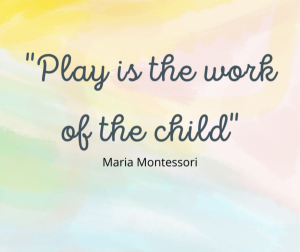By Anna McLean – Preschool Deputy Principal
If you think of work as being part of a tamaiti’s natural development, then the word “work” takes on a different meaning. When a tamaiti is offered an environment that is prepared for their developmental needs and they are given the freedom to choose activities that they are interested in then both words, “work” and “play” become redundant. You will often hear the word “work” used in a Montessori classroom to describe the activities that tamariki do. As adults we tend to think of “work” in a negative way. We spend a lot of time at work and then we come home and there is more work to do! The word “work” has a connotation of something that requires physical and/or mental effort and can be difficult at times. Why would we want to subject our tamariki to “work” when they should be playing? In her book, Maria Montessori Speaks to Parents, page 17, Montessori-Pierson she says. “Grown-ups think of play as a purposeless occupation that keeps children happy and out of mischief, but actually when children are left to play by themselves very little of their activity is purposeless.”
Their natural inclination to be active and doing something takes over and they aren’t making the distinction between work and play.
“This development takes place because the child has been able to work and to be in direct contact with reality. It does not come from anything we teach the child; it is a definite, constructive process, a natural phenomenon that results when the child is given the chance to make his own efforts and do his own work without intermediaries. We think the child is happiest when he is playing; but the truth is that the child is happiest when he is working.” (Education and Peace, page 78 Clio Press.)
We cannot know what inner processes are being formed with activity and what internal needs are being met. We can only see the external manifestation of their activity.
We see tamariki developing skills through using practical life activities as well as all the hands-on materials and activities. We see concentration developing as they spend greater amounts of time on activities that have many steps. There is a calmness in the environment when each tamaiti is going about their own work and absorbed in what they are doing.
“What motivates the child is thus not the goal set for him by the adult, but his own drive for self-perfection. The child perfects himself through contact with reality, through activity that absorbs all his attention.” (Education and Peace pg 79 Clio Press.)
Naturally there is a place for play during a child’s day and the social interaction that is often associated with play has benefits to a tamaiti’s development as well. The holistic approach we take to a tamaiti’s overall development is always at the forefront of our minds. Perhaps the words work and play are interchangeable!
